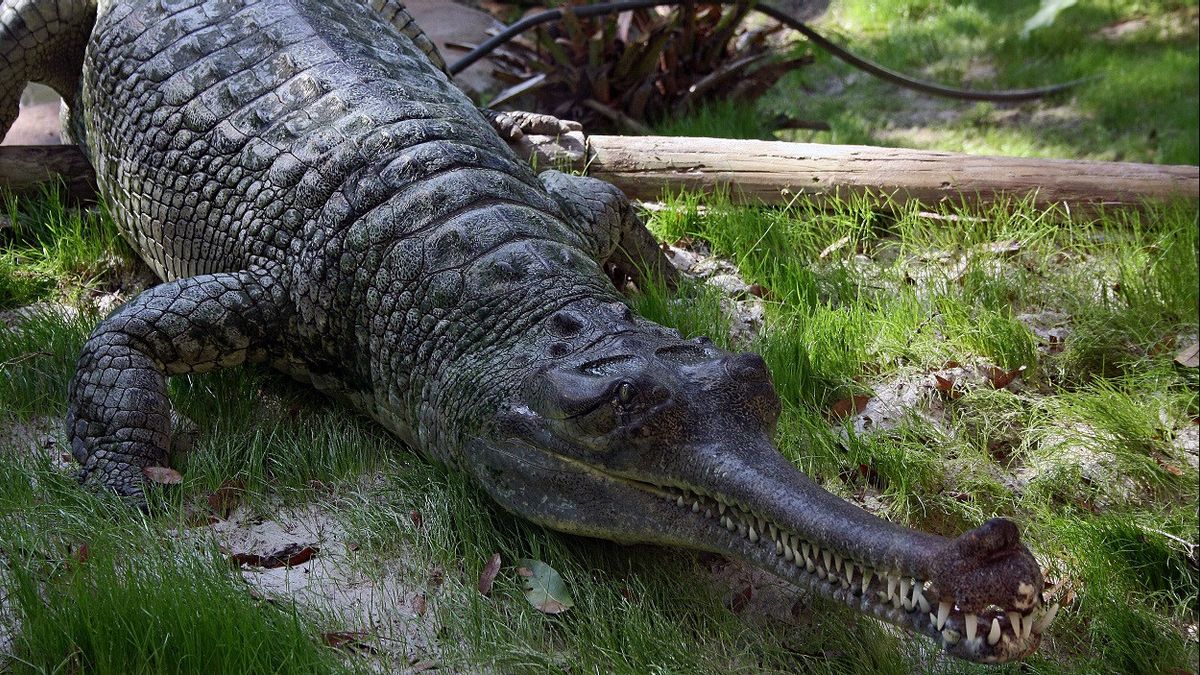JAKARTA - About a fifth of reptile species, from the Galapagos tortoise to Indonesia's Komodo dragon, from the West African rhino viper to the Indian gharial, are threatened with extinction, researchers said Wednesday in the first comprehensive global status assessment for reptiles.
The study examined 10,196 reptile species including turtles, crocodiles, lizards, snakes and tuataras, the only surviving members of the lineage that are more than 200 million years old.
They found that 21 percent of species are critically endangered, endangered or vulnerable to extinction as defined by the International Union for Conservation of Nature (IUCN), the global authority on species status. They also identified 31 extinct species.
Many reptiles are pushed to the brink, the researchers say, by the same factors that harm the world's other land vertebrates, amphibians, birds and mammals, namely, deforestation for agriculture, logging and development, urban encroachment and hunting by humans.
Climate change and invasive species also present ongoing threats, they added.
"Reptiles represent an important and diverse branch of the tree of life and play an integral role in the ecosystems in which they exist," said Bruce Young, one of the leaders of the study published in the journal Nature.

"This global assessment is a key start to understanding reptile conservation needs. Now we know where the priorities are and what the threats are we need to improve. There is no longer any reason to leave reptiles out of conservation planning and implementation efforts around the world," added Young, head of zoology. and senior conservation scientist at Arlington Virginia-based NatureServe, a biodiversity science organization.
Previous status reports found around 41 percent of amphibian species, 25 percent of mammal species and 14 percent of bird species were threatened with extinction. The species status assessment considers distribution, abundance, threat, and population trends.
About 27 percent of reptile species confined to forest habitats were found to be endangered, compared to about 14 percent of species inhabiting dry habitats.
"Destruction of forests for timber and to prepare land for agriculture, including livestock, is widespread. Arid habitats have fewer natural resources and are less suitable for agriculture than forests and so, to date, have not changed much compared to forested habitats," Young said.
However, a number of other reptiles are known to be in the opposite condition, aka relatively 'safe'. Australia's saltwater crocodile, the world's largest reptile, is listed in the 'least concern' category about extinction. Meanwhile, its crocodile cousin, the gharial, on the other hand, is endangered.
Among several other well-known reptiles: the Komodo dragon, the world's largest lizard, is endangered; the king cobra, the world's longest venomous snake, is vulnerable; leatherback turtles, the largest turtles, are vulnerable; Galapagos marine iguanas are vulnerable; and the various species of Galapagos tortoises range from vulnerable to extinct.

It is known that several 'hot spots' for reptile risk are documented. In the Caribbean, for example, the Jamaican rock iguana and a lizard called the blue-tailed galliwasp are endangered.
In West Africa, the Perret mountain chameleon is endangered and the viper rhino is vulnerable. Meanwhile in Madagascar, the leaf chameleon Namoroka is threatened with extinction. In Southeast Asia, the big-headed turtle is threatened with extinction.
"I have lived in Costa Rica since the 1980s. A snake called the black-headed forest master, which feeds on small forest mammals such as mice, was once widespread in lowland rainforests along the country's Pacific slopes," Young said.
"Extensive deforestation, including the conversion of forests to oil palm plantations, has fragmented habitats so that these species are now categorized as vulnerable," he said.
Among the reptiles most threatened, Young said, are the Chapman pygmy chameleon, a small lizard inhabiting the lowland rainforests of Malawi that was thought to be possibly extinct but has now been found in some parts of the forest.
"Global collaboration and commitment is a must if we are to prevent catastrophic extinctions," said study co-leader Neil Cox, manager of the Biodiversity Assessment Unit, a joint initiative of IUCN and the group Conservation International.
The English, Chinese, Japanese, Arabic, and French versions are automatically generated by the AI. So there may still be inaccuracies in translating, please always see Indonesian as our main language. (system supported by DigitalSiber.id)













